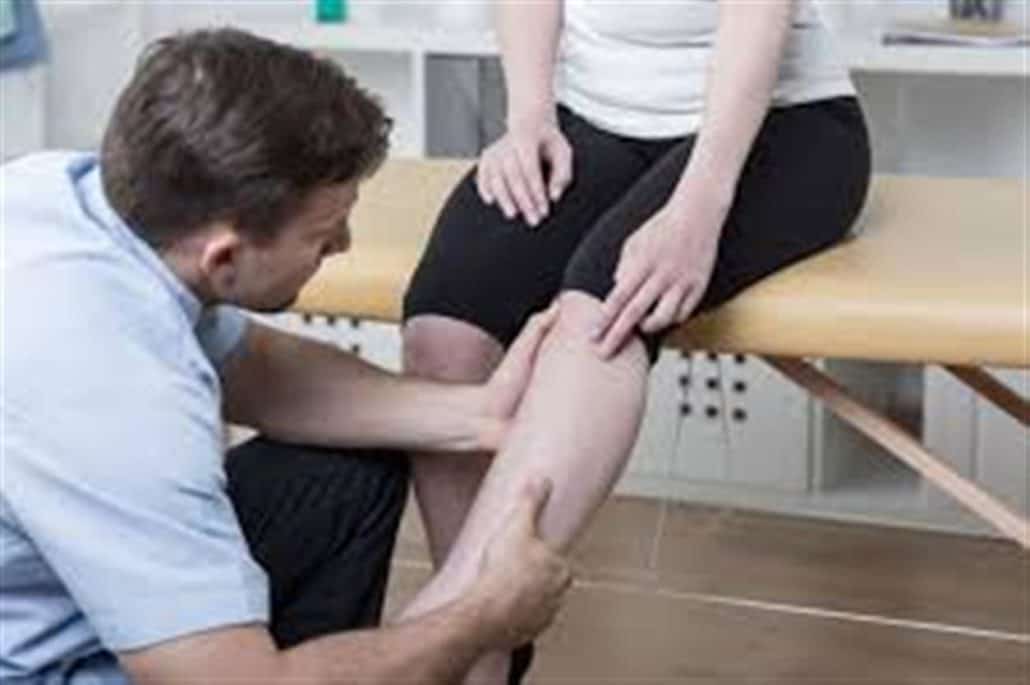Deep-Vein Thrombosis Can Be Serious: Physical Therapy From Home Care in Thousand Oaks Can Help Reduce Your Risks
Deep-vein thrombosis (DVT) can lead to serious complications if not promptly and correctly treated. Physical therapy from the skilled professionals in Thousand Oaks is part of DVT care. They are aware that some individuals don’t have symptoms of DVT in its early stages.
Blood travels from your heart to the rest of your body through arteries. Your arteries have thin interior muscles. That keeps them from bursting when your heart pumps blood through them.
The blood returns to your heart through veins. Veins are less strong than arteries because there is no pumping action. The muscles of your body squeeze the veins to push the blood through.
The muscles work when you’re active. When you’re immobile, the blood remains in your veins. It may form a clot.
Medically, the clot is a thrombus. The condition of having a blood clot is thrombosis. If part of the clot breaks off and blocks the flow of blood somewhere else, it’s called an embolism.
If the thrombosis occurs in superficial veins, it’s not usually serious, although it needs attention. Thrombosis in deep veins (DVT) is another matter entirely. An embolism can wreak havoc when it cuts off the flow of blood.
An embolism that travels to the lungs is a pulmonary embolism (PE). Pulmonary embolisms need immediate attention. If the embolism stops in your heart, you may feel as if you’re having a heart attack.
You may not have noticeable symptoms of DVT. Sometimes the symptoms you have are easily attributable to other causes. Common DVT symptoms include:
- Noticeable swelling of your leg
- Swelling along a vein in your leg
- Feeling leg pain when standing or walking
- Redness, discolored skin, or warmth in the painful area
Thrombosis in your thigh is the biggest source of a pulmonary embolism.
The symptoms of a pulmonary embolism include:
- Shortness of breath
- Pain if you breathe deeply
- Chest pain if you cough
- Blood appears when you cough
- Rapid breathing and rapid pulse
- Dizziness, lightheadedness, or fainting
An untreated pulmonary embolism is life-threatening.
National Pulmonary Rehabilitation Week was March 11 – 17, 2018. Damage to your lungs cannot be reversed. Rehabilitation after a pulmonary embolism is meant only to improve overall well-being. That means reducing as many of your DVT risk factors as possible.
Inactivity Is the Biggest Cause of DVT
Dozens of factors put you at risk of developing DVT. Some, such as certain inherited blood diseases, are beyond your control. Others, such as obesity or smoking, can be reduced by lifestyle changes.
The main cause for most people is inactivity, which can result from:
- Paralysis
- Hospitalization
- Injuries
- Surgery
- Cancer
- Heart failure
- Long drives or airplane flights
Any condition or circumstance that keeps you from contracting your muscles puts you at risk.
Home Health Care in Thousand Oaks Helps to Reduce Your DVT Risk
Physical therapy can help get you moving. The American Physical Therapy Association has developed protocols for therapists treating patients at risk for DVT. The home health care physical therapists at Thousand Oaks follow those guidelines.
They will evaluate your risk factors and design a customized care plan for you. They then devise gentle exercises or movements that help your muscles contract. If you are mobile, they work to strengthen your muscles.
You may receive physical therapy that will improve your range of motion. Care will be taken with all movement to avoid dislodging an embolism.
If you have a pulmonary embolism, you also receive respiratory therapy. The therapists measure your ability to breathe and assess the quality of air in your home. They teach you how to get the maximum amount of air into your lungs.
Physical Therapy Is Only One Part of DVT Treatment
Our team of home health care experts works with your physician. Medical treatment often includes anticoagulants (blood thinners) to keep more clots from forming. Some are pills, others must be injected, and certain ones require an IV.
Diet restrictions are necessary for most anticoagulants. Excessive bleeding can occur. Registered nurses carefully monitor the dosage and timing when you’re prescribed an anticoagulant.
Pegasus Home Health Care in Thousand Oaks Is Dedicated to Your Wellness
Your Pegasus home health team includes exercise, nutrition, and counseling in their care. When necessary, they will get you the help you need to make lifestyle changes. Their goal is to keep you healthy and independent.
The care you receive is geared toward recovery of DVT and keeping you from developing more clots. Home health care will help you with other conditions as well. We look at you as a complete person, not just a diagnosis.
Care plans are customized to fit the needs of each person, and are based on:
- Dignity
- Compassion
- Independence
- Medical care
We strive always to improve the quality of life for each individual.
Pegasus is a licensed Home Care Organization and a Joint Commission Accredited Home Health Care organization. Since 1994, we’ve helped individuals remain safe and independent in their home. Contact us today to receive the help you need in the comfort and privacy of your home.

